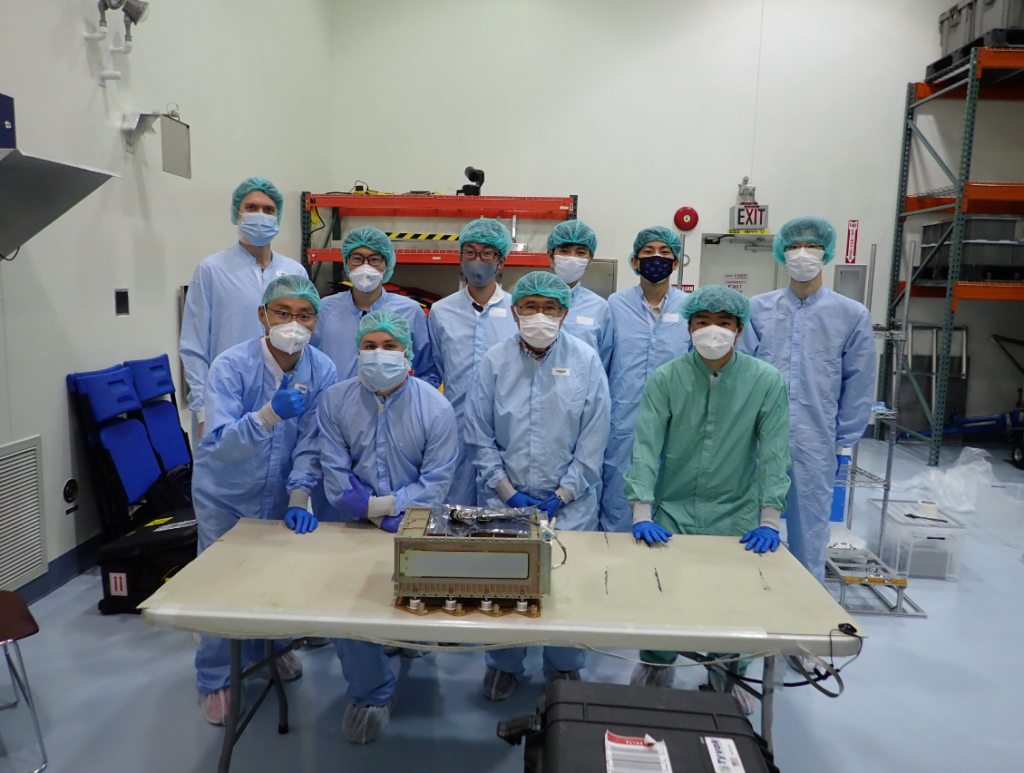
MABE graduate Grayson Hawkins (‘19), top left, with a team of JAXA engineers after successful integration of the Omotenashi satellite.
UT’s Department of Mechanical, Aerospace, and Biomedical Engineering has a long history of graduates going on to work with NASA, including nine astronauts, several members of mission control, and countless others at the space agency itself or with contactors who work with it in continuing the country’s space program.
Grayson Hawkins (ME ’19) has added to that roster, including recently being part of a two-man-team tasked with integrating thirteen satellites with all of the secondary payloads for NASA’s Artemis I mission, the first flight of NASA’s new rocket, the SLS.
“I went from my master’s program in Knoxville in December, to getting my hands on satellites from around the world in July,” Hawkins said. “It really was an opportunity of a lifetime. I got to help integrate NASA-sponsored satellites that are flying off towards asteroids and the Moon on the very first launch of the SLS, the same rocket that will take humans to the Moon and eventually Mars.”
Hawkins, who was hired as a satellite systems engineer for Tyvak, a Terran Orbital Company, said that he hopes more UT graduates will get involved in the space industry as it is set to explode in the coming decade.
In fact, despite the pandemic, a record number of satellites were launched in 2020, more than triple the number from the year before, according to the Satellite Industry Association, an upward trend that seems poised to continue.
“Every satellite company that I know of is hiring, and at a record pace,” Hawkins said. “I think that UT graduates are in a great position to enter this emerging market.”
Hawkins was not the only one with MABE connections during his time on the Artemis I mission. NASA Space Act Agreements Manager and Architecture Lead for Exploration Augmentation Module Project Paul Bookout (MS ’02), whose career spans from shuttle missions to deep space habitats, was also working on the program from the NASA side.
Bookout worked on his master’s degree in engineering science and mechanics while working at NASA Marshall Spaceflight Center, but now finds himself on the cusp of retirement.
“I got to work with Dr. Bookout during a special integration with a full team of engineers from
Japan Aerospace Exploration Agency,” said Hawkins. “Interfacing with Japan’s space agency was really a dream come true. I think Tennessee has a special connection with Japan.”
The Japanese satellite at the heart of that project—OMOTENASHI, the Japanese word for hospitality—will make a controlled descent to the lunar surface, which would make Japan the fourth nation to successfully land on the Moon, following the US, the Soviet Union, and China. India and Israel have each had planned landings end in crashes in recent years, highlighting the difficulty of the task.
The lander would provide valuable data related to landing maneuvers, as well as radiation measurements, helping pave the way for future missions.
During his time on campus, Hawkins was a driving force in several activities including the launching of Tech CarniVol, a science and technology day of activities for Tickle College of Engineering students that ran alongside Engineers Day, and working with UT’s Amateur Radio Club to earn selection for a chance to try to contact the International Space Station as it passed overhead.
Space has long been his passion, though, and one of the biggest impacts he made while at UT was helping found the Student Space Technology Association in 2015. Now more than six years later, it is still going strong with healthy support from students, faculty, staff, and donors.
It’s a role Hawkins is rightly proud of playing, and one that he hopes continues to inspire students.
“I loved my time at UT and I am so grateful for the opportunities it afforded me,” he said. “When I was in school, I tried really hard to promote space to the college, and in just a couple of years I was able to work on some of the biggest programs at NASA. I want students to know that UT is represented here at the edge of science and exploration, and that they can be a part of it.”
If you are a student interested in working in space-related fields, your odds are good of finding those opportunities, according to Hawkins.
“You have to be building things constantly,” he said. “The administration was a huge supporter of extracurricular engineering and funding was always available when we needed it.”
He also encourages students to reach out to him via his email or on the department’s LinkedIn page if they are interested in finding an aerospace-based career, while also highly recommending Tyvak to current students.
Just another sign that, for UT graduates, the possibilities are as endless as space itself.